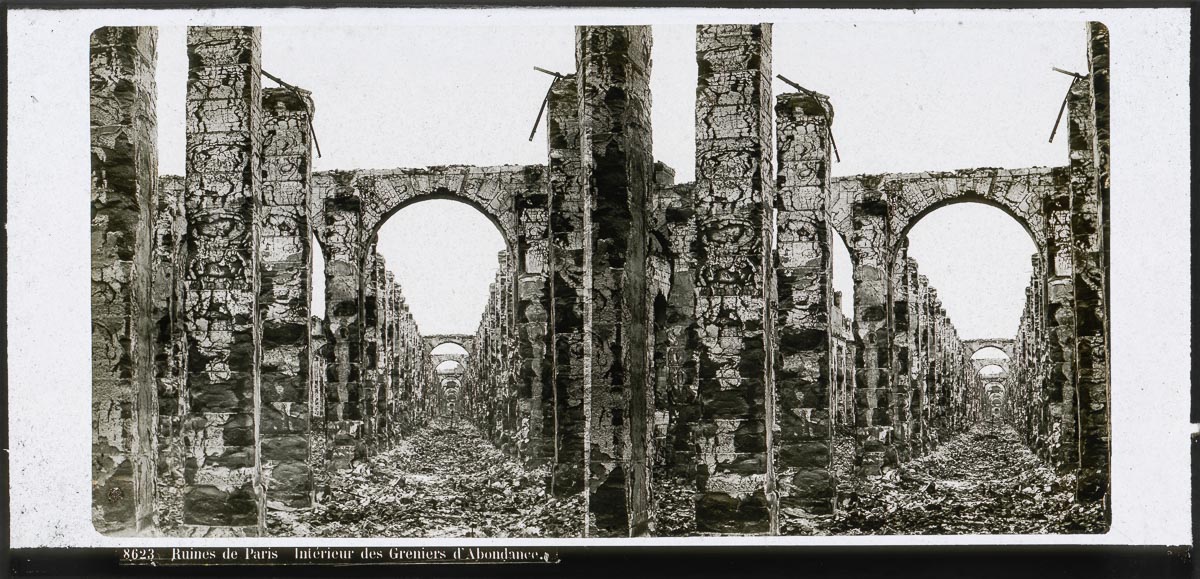
8.5 x 17 cm glass stereoview, Léon & Lévy
The collection Ruines de Paris (Ruins of Paris) consists of 8.5 x 17 cm glass stereoviews that mark a turbulent period in the history of France. It started with the Franco-Prussian War of 1870–1871, which was a pivotal conflict in European history. Its origins lay in the complex interplay of nationalism, imperial ambitions, and diplomatic rivalries of the mid-19th century. Central to the conflict was the rise of Prussian power under Otto von Bismarck, whose unification agenda threatened French influence in Europe. The immediate cause was the Ems Dispatch incident, manipulated by Bismarck to provoke French outrage. The provocation worked and Emperor Napoleon III of France declared war on Prussia and its supporting German states on 19 July 1870.
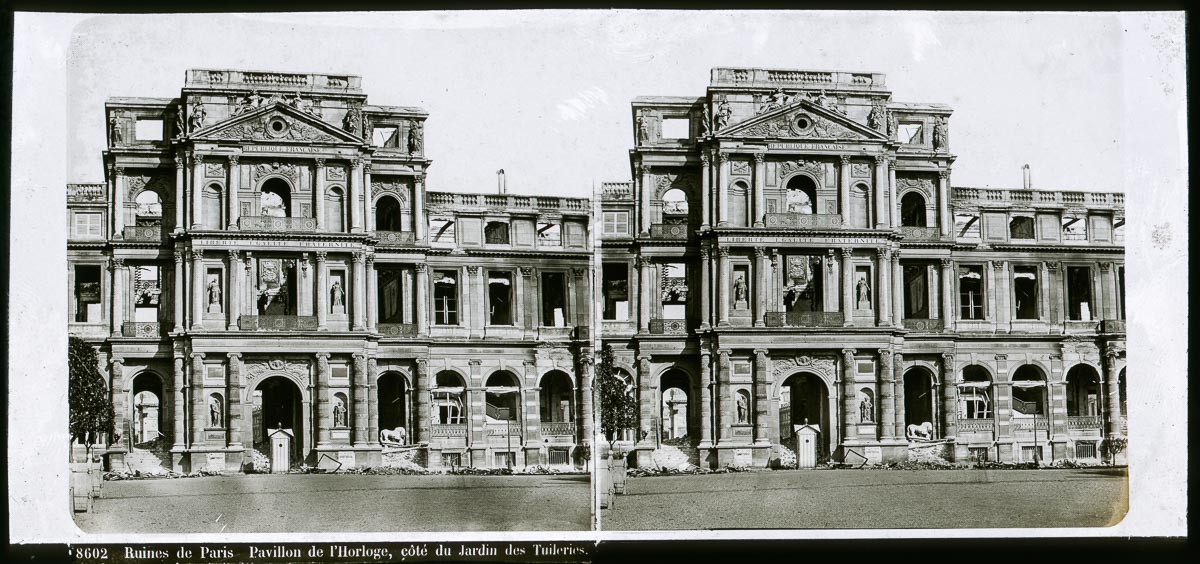
8.5 x 17 cm glass stereoview, Léon & Lévy
The war was marked by rapid Prussian victories and showcased the superiority of Prussian military organisation, strategy, and technology. Decisive was the Battle of Sedan, from 1 to 2 September 1870, resulting in the capture of Emperor Napoleon III and over a hundred thousand French troops. After the capture of the Emperor, France became a republic but the new government of the French Third Republic decided to continue the war. The Prussians therefore started to besiege and shelling Paris. The Siege of Paris started on 19 September 1870 and ended with the French capitulation on 28 January 1871. The Germans had fired around 12,000 shells in three weeks into the city, in an attempt to break Parisian morale. After the French capitulation, the German armies held a victory parade in Paris on 1 March 1871.
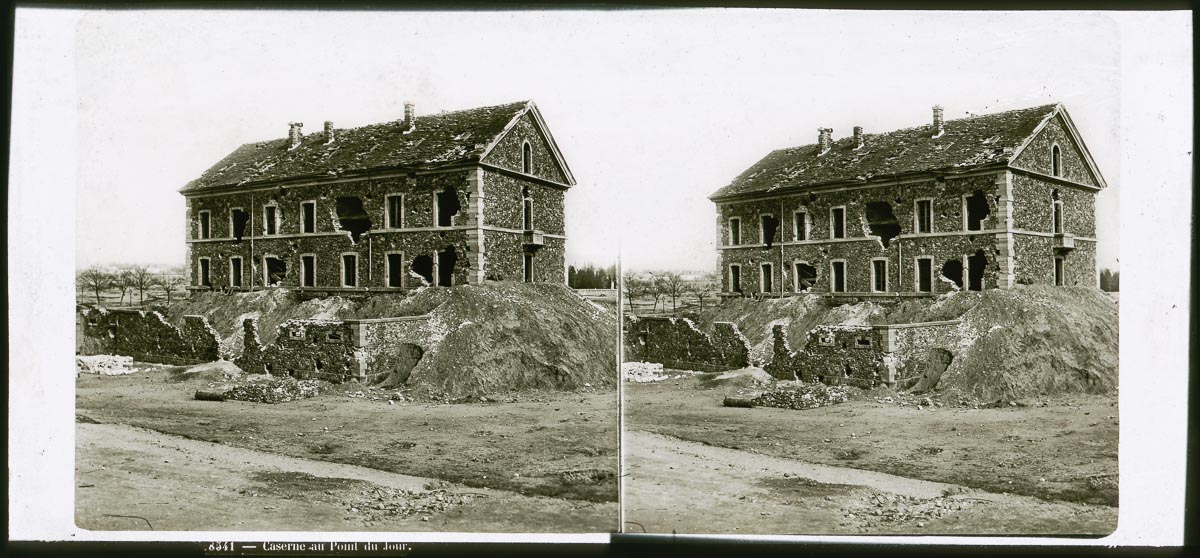
8.5 x 17 cm glass stereoview, Léon & Lévy
The Treaty of Frankfurt was signed in May 1871 and formalised the German victory. The treaty resulted in significant territorial losses for France, including Lorraine and parts of Alsace. In Germany, the victory facilitated the unification of German states under Prussian leadership. It had proclaimed the German Empire on 18 January 1871 in the Hall of Mirrors at Versailles, a symbolic act that further humiliated France. The emergence of a new superpower in Europe and the French revenge feelings contributed to the outbreak of the First World War in 1914.
The Paris Commune
The Siege of Paris had created severe hardship for the city’s residents. The prolonged siege had led to food shortages, economic disruption, and a deep sense of grievance among Parisians. The new government’s perceived mishandling of the war and the eventual capitulation to the Prussians fuelled anger and distrust towards the French authorities. This led to a surge in radical and socialist sentiments among Paris’ working class and political activists.
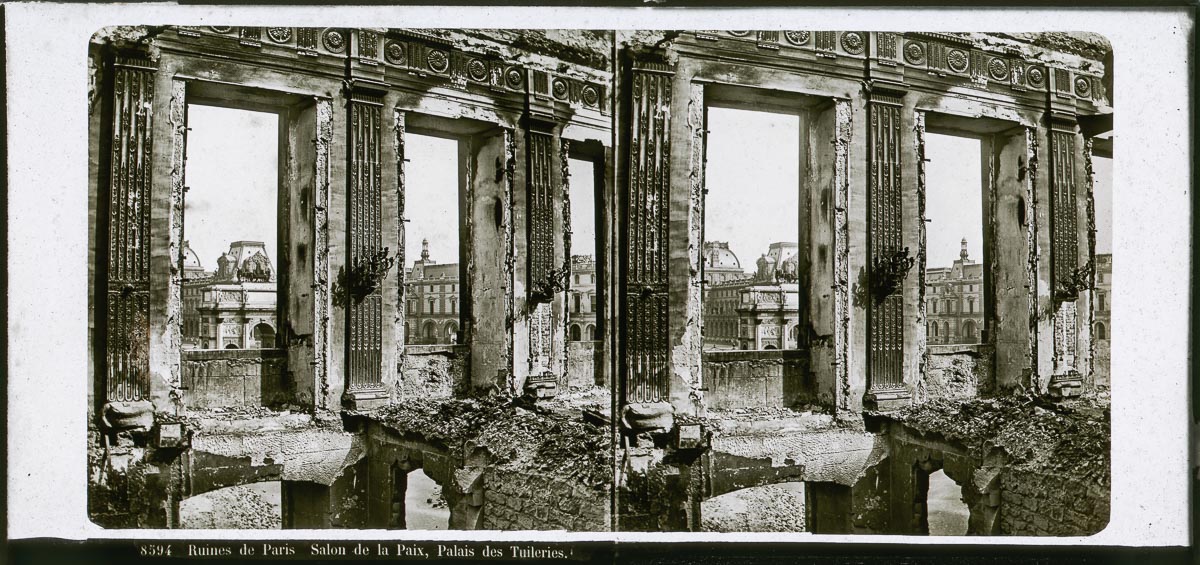
8.5 x 17 cm glass stereoview, Léon & Lévy
On 18 March 1871, the Paris Commune was proclaimed. The Commune represented a radical and revolutionary challenge to the conservative national government. It sought to implement a range of social reforms and operated as an independent, working-class government distinct from the national authorities. The Paris Commune lasted for about two months. It was brutally suppressed by the French army during the “Semaine Sanglante” (Bloody Week) in May 1871. During this violent crackdown, many buildings that were symbols of the traditional government were burned down by the Communards. The Bloody Week resulted in thousands of Communards being killed or executed and marked a tragic end to this revolutionary episode.
The Ruins of Paris by Léon & Lévy
Images of the Franco-Prussian War are rare, but the ruins of Paris, resulting from the siege and the uprising of the Paris Commune, were frequently captured. Prints and paper card stereoviews were manufactured by various publishers.
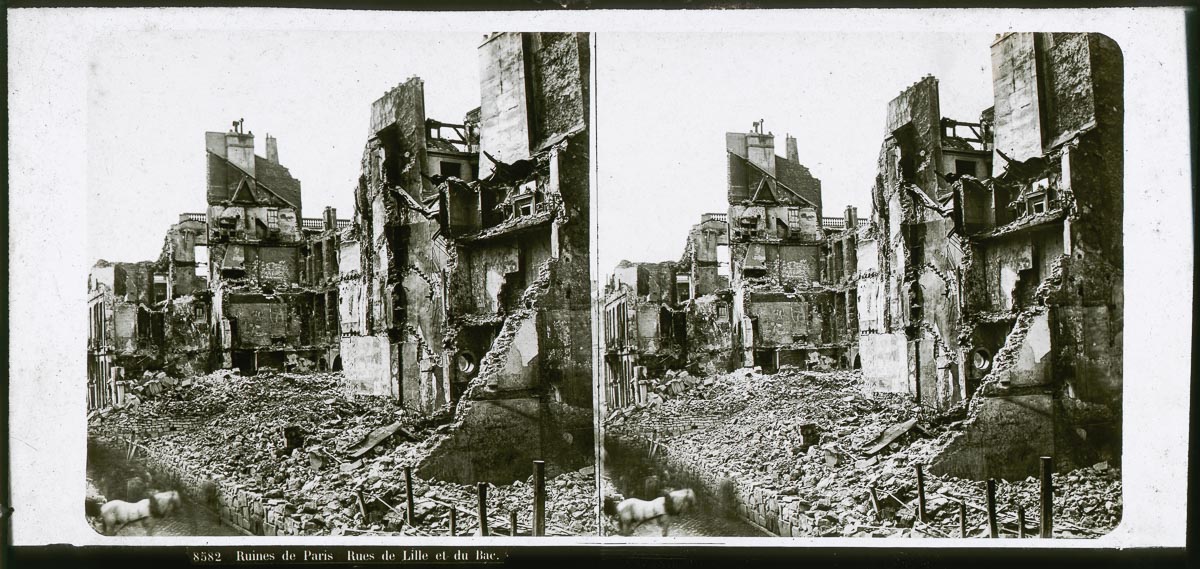
8.5 x 17 cm glass stereoview, Léon & Lévy
Léon & Levy were the successors of Ferrier père, fils et Soulier, the firm that was renowned for the manufacturing and publishing of high-quality glass stereoviews. Léon & Levy published a series of glass stereoviews with the ruins of Paris, probably in the summer of 1871. A list of 116 titles appeared in 1875 in a catalogue of M.F. Benerman & Edward L. Wilson from Philadelphia, entitled Classified Catalogue of Magic Lantern Slides and Transparencies for the Stereoscope, Manufactured by Messrs J. Lévy & Co., Paris1.
The glass stereoviews of Claude-Marie Ferrier and successors have been classified by John B. Cameron and Janice G. Schimmelman. The stereoviews of Ruines de Paris are classified as “Verre Transparent – Type D-5”2. These stereoviews consist of two layers of glass. A glass layer on which the image is printed, and a second frosted glass (verre dépoli) that protects the emulsion and diffuses the light. The two images of the stereo pair are printed side by side, with no gaps between them (single window), and the left and right images have small round corners. The stereoviews are provided with a number and title, printed on transparent gelatin sheets. The name of the publisher is missing.
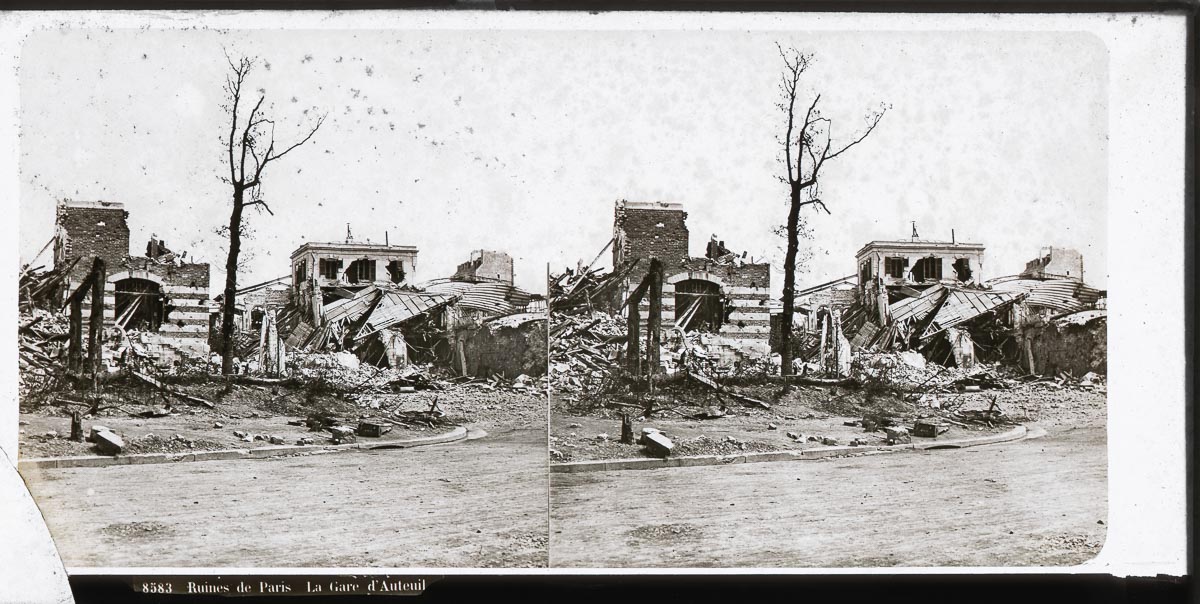
8.5 x 17 cm glass stereoview, Léon & Lévy
References
- John B. Cameron and Schimmelman, J.G. (2016) The glass stereoviews of Ferrier & Soulier 1852–1908. p. 85. ↩︎
- Ibid, p. 185. ↩︎
Further read
- Franco-Prussian War. Via: en.wikipedia.org
- Paris Commune. Via: en.wikipedia.org
